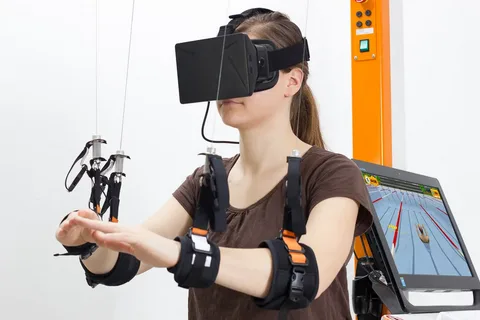In the ever-evolving landscape of mental health treatments, Virtual Reality (VR) Therapy emerges as a groundbreaking solution for conquering phobias. As we delve into this transformative approach, we uncover the seamless fusion of technology and psychology, offering a potent remedy for those grappling with debilitating fears.
Understanding the Essence of Virtual Reality Therapy
The Immersive Realm of VR
Virtual Reality Therapy immerses individuals into lifelike, computer-generated environments, providing a controlled space to confront and overcome their fears. This immersive experience distinguishes VR therapy from traditional methods, fostering a dynamic and engaging atmosphere for therapeutic interventions.
Precision and Personalization
One of the paramount advantages of VR therapy is its ability to tailor experiences to each individual’s specific phobia. Whether it’s fear of heights, flying, or enclosed spaces, the technology adapts, ensuring a personalized journey towards conquering irrational fears.
The Science Behind the Success
Exposure Therapy Reinvented
At the core of Virtual Reality Therapy lies the reimagining of exposure therapy. Traditionally, exposure therapy involves gradual and controlled exposure to the feared object or situation. VR therapy amplifies this concept by providing a highly controlled, yet incredibly realistic, environment for exposure, accelerating the therapeutic process.
Neuroplasticity Unleashed
Harnessing the principles of neuroplasticity, VR therapy prompts the brain to rewire itself in response to new experiences. The immersive nature of the therapy induces a profound impact on the neural pathways associated with phobic responses, leading to lasting changes in behavior and perception.
Realizing Tangible Results
Swift and Lasting Outcomes
Virtual Reality Therapy has demonstrated remarkable efficacy in achieving rapid and lasting results. Unlike traditional therapies that may require extensive sessions, VR therapy often shows tangible improvements in a shorter timeframe, making it an attractive option for those seeking swift resolution to their phobias.
Enhancing Treatment Adherence
The interactive and engaging nature of VR therapy contributes to higher treatment adherence rates. Individuals find themselves more committed to the therapeutic process, as the immersive experience captivates attention and promotes active participation.
Overcoming Limitations of Traditional Approaches
Breaking Through Barriers
Traditional therapy approaches face inherent limitations, such as the challenge of recreating authentic scenarios for exposure. Virtual Reality Therapy surmounts these obstacles by recreating scenarios with unparalleled realism, enabling individuals to confront and conquer their fears in a controlled yet authentic environment.
Accessibility and Convenience
In an era where accessibility is paramount, VR therapy provides a convenient solution. It eliminates geographical barriers and offers therapy in the comfort of one’s surroundings, a crucial factor in fostering a stress-free therapeutic experience.
Navigating the Future of Mental Health
Expanding Horizons
As the field of mental health continues to evolve, Virtual Reality Therapy stands at the forefront, showcasing its potential to revolutionize how we approach and treat phobias. The amalgamation of technology and therapeutic efficacy propels us into a future where overcoming mental health challenges becomes more efficient and accessible than ever before.


